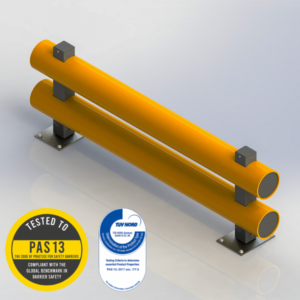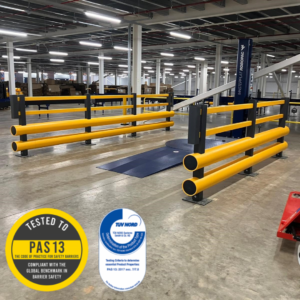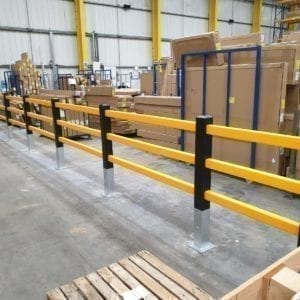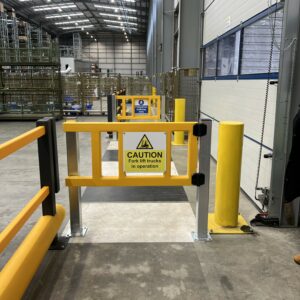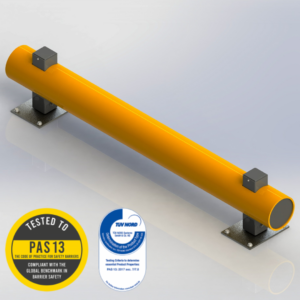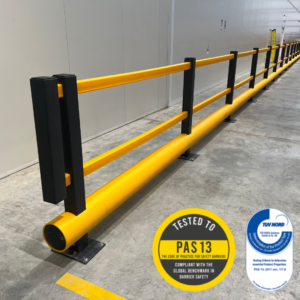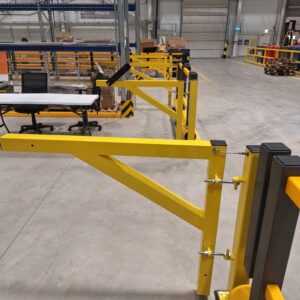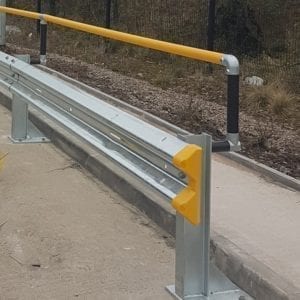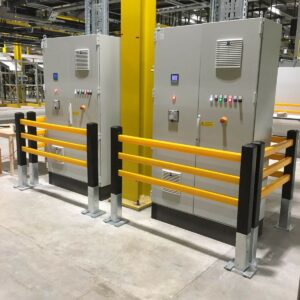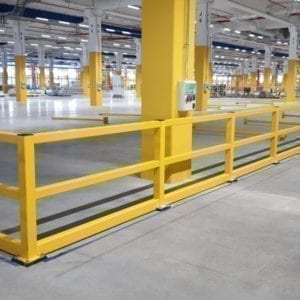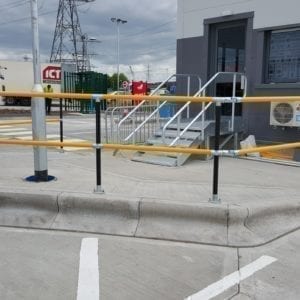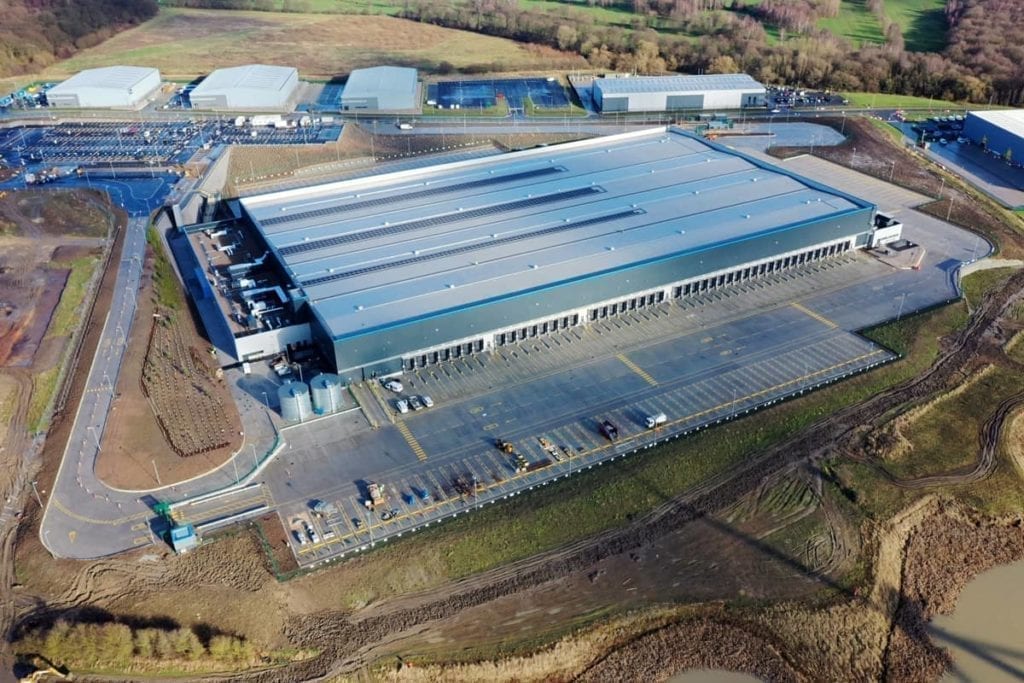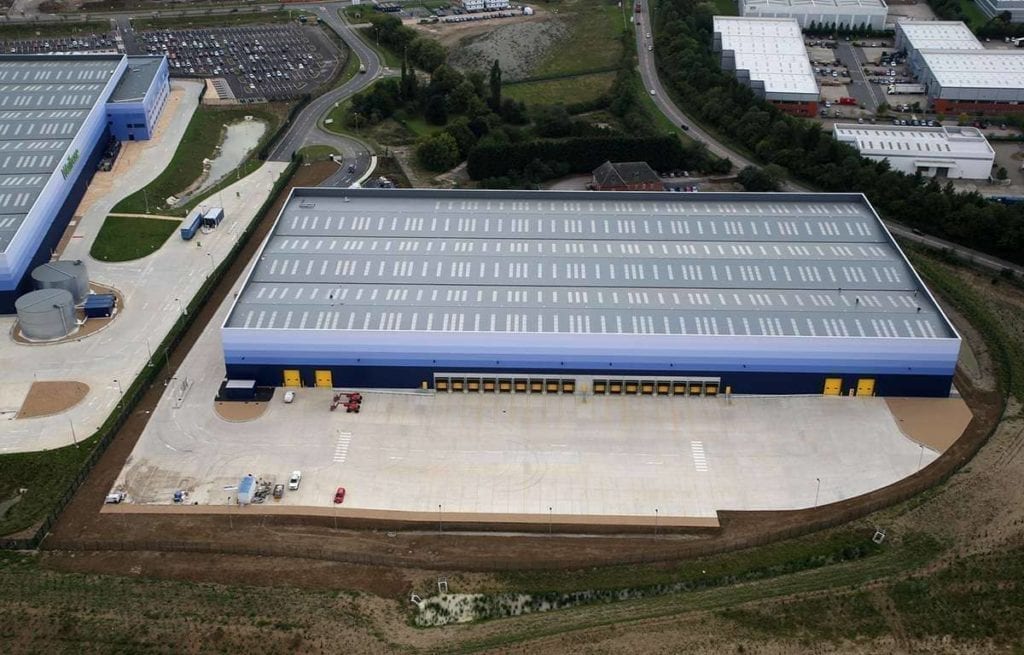Applications of our Pedestrian Safety Barriers include:
Warehouses: Deploy the Double Bumper Pedestrian Safety Barrier to create secure pedestrian walkways throughout warehouses. This facilitates the smooth movement of personnel while preventing accidents in workspaces shared with forklifts and other equipment. The Pedestrian Safety Barriers (SEG+) are particularly suited for segregating forklifts and pedestrians in areas with a significant volume of foot traffic, such as production lines, assembly areas, and busy logistic centre environments.
Industrial Facilities: Enhance safety by using the Polymer Safety Barrier to establish dedicated pedestrian pathways. This segregation of foot traffic from machinery and vehicles prevents potential accidents in bustling industrial environments. Our Guardrail Systems (MHE / PIT) is perfect at separating forklifts and equipment from pedestrian routes, protecting low impacts along the ground.
Food Production Facilities: Implement our Pedestrian Safety Barriers in food processing zones to maintain a distinct separation between workers and equipment. This ensures hygienic operations and reduces the risk of collisions. Our Polymer range from Single Bumper Barriers to Double Bumper Pedestrian Barriers are excellent for areas where water, mould, corrosion, and solvents will unavoidably be prevalent.
Freezer Environments: The durable construction of the Polymer Safety Barrier, combined with its ability to withstand extreme temperatures, renders it suitable for use in freezer storage areas. It provides clear demarcation and safety for personnel navigating in sub-zero conditions. Our Polymer range from Double Bumper Barriers to Single Bumper Pedestrian Barriers are excellent for areas where water, mould, corrosion, and solvents will unavoidably be prevalent. Additionally, Pedestrian Handrails (HR50) are great for giving potentially hazardous pathways through cold environments an extra level of safety. The Pedestrian Handrail Systems (HR50) can be paired with our Armco 760HR Safety Barrier for further protection from vehicles, making them an ideal solution for access ramps.

